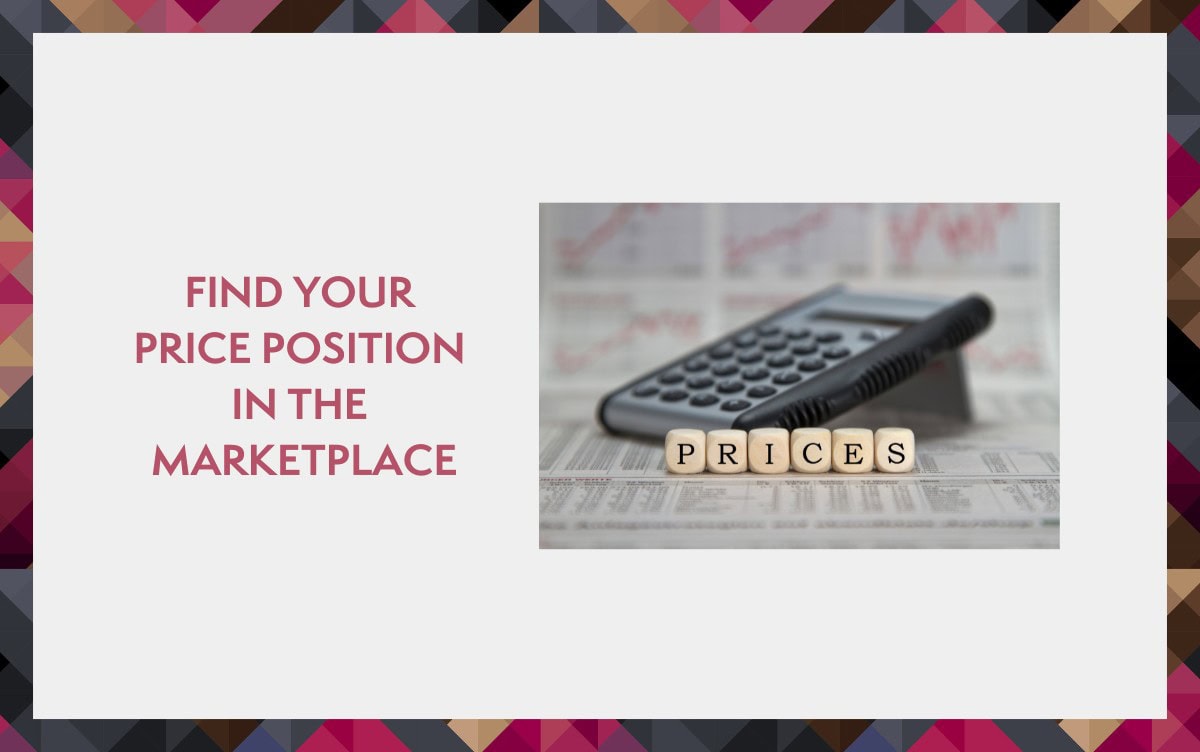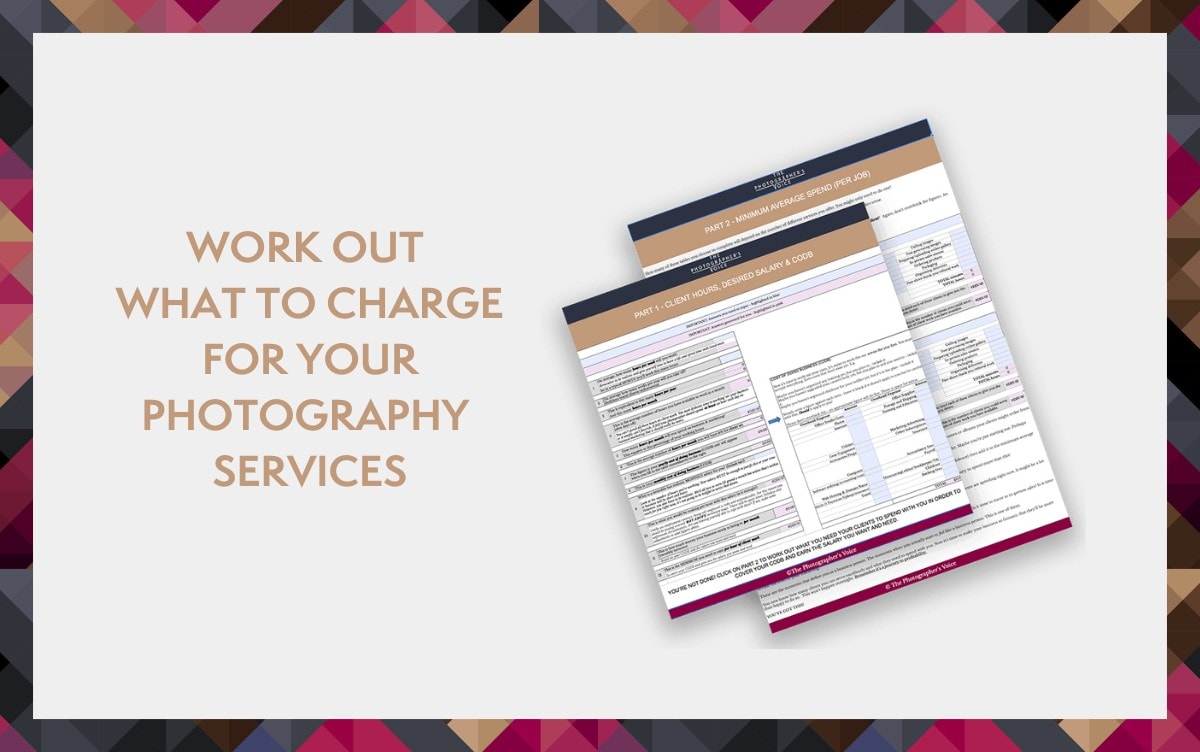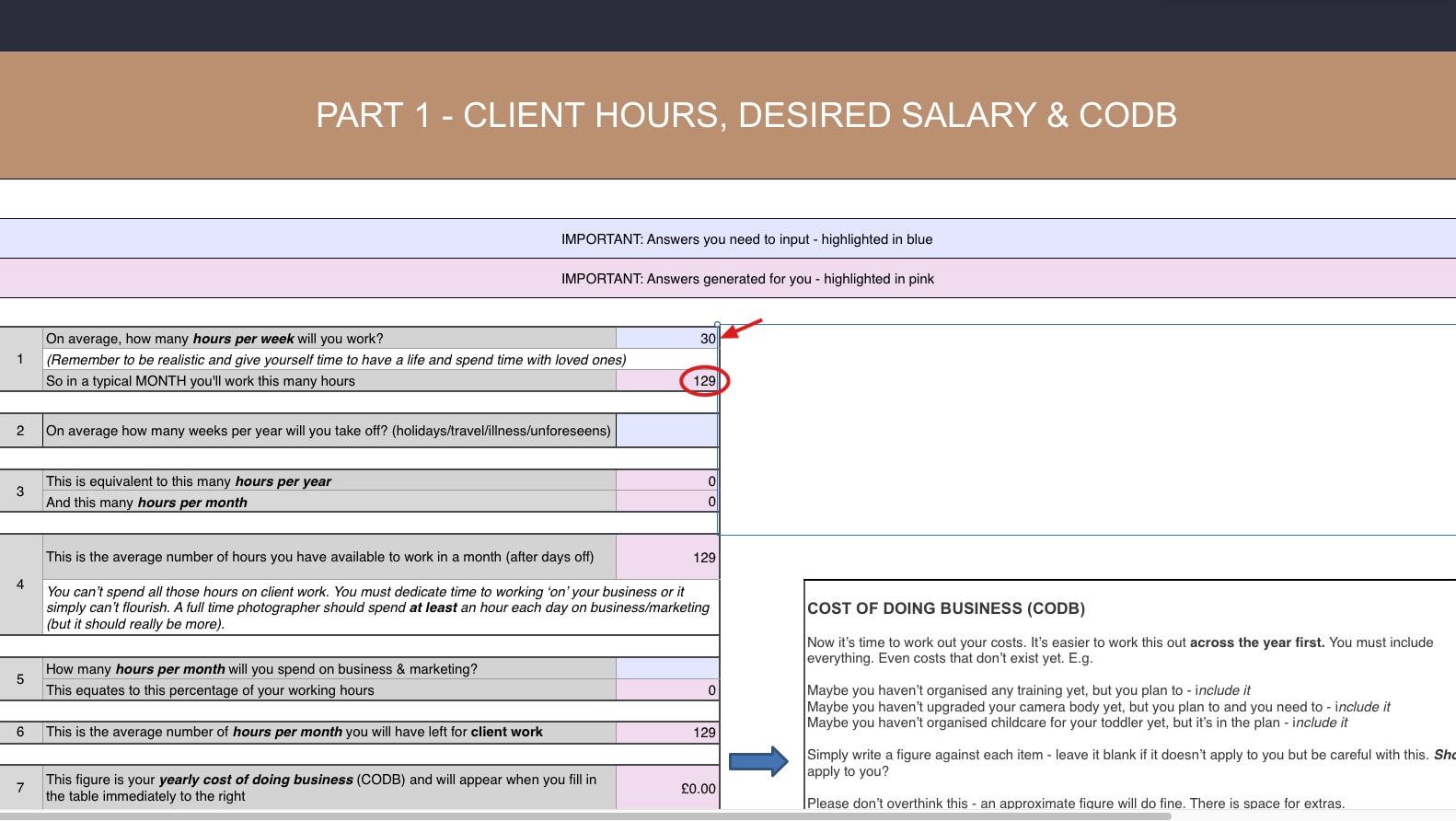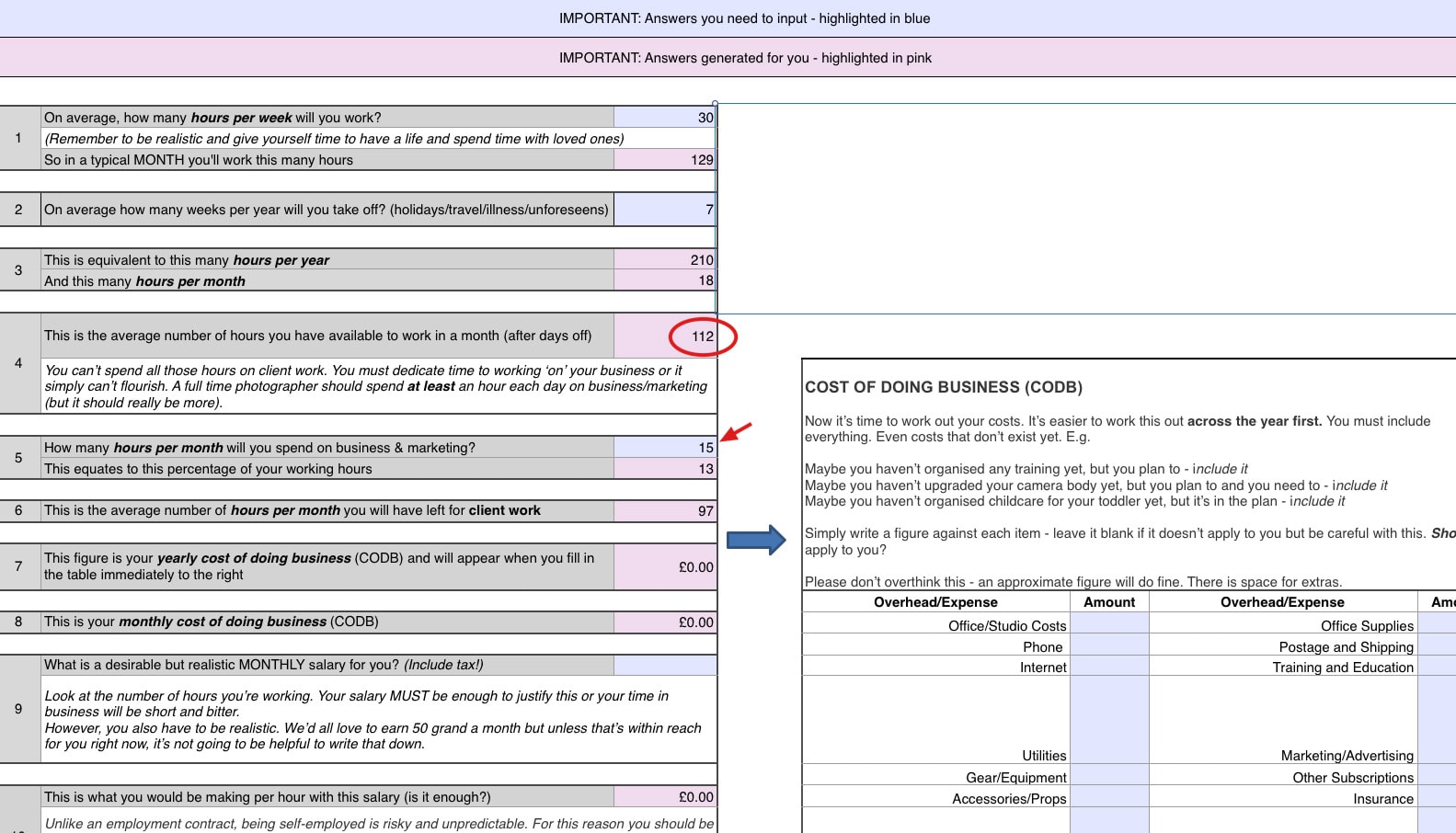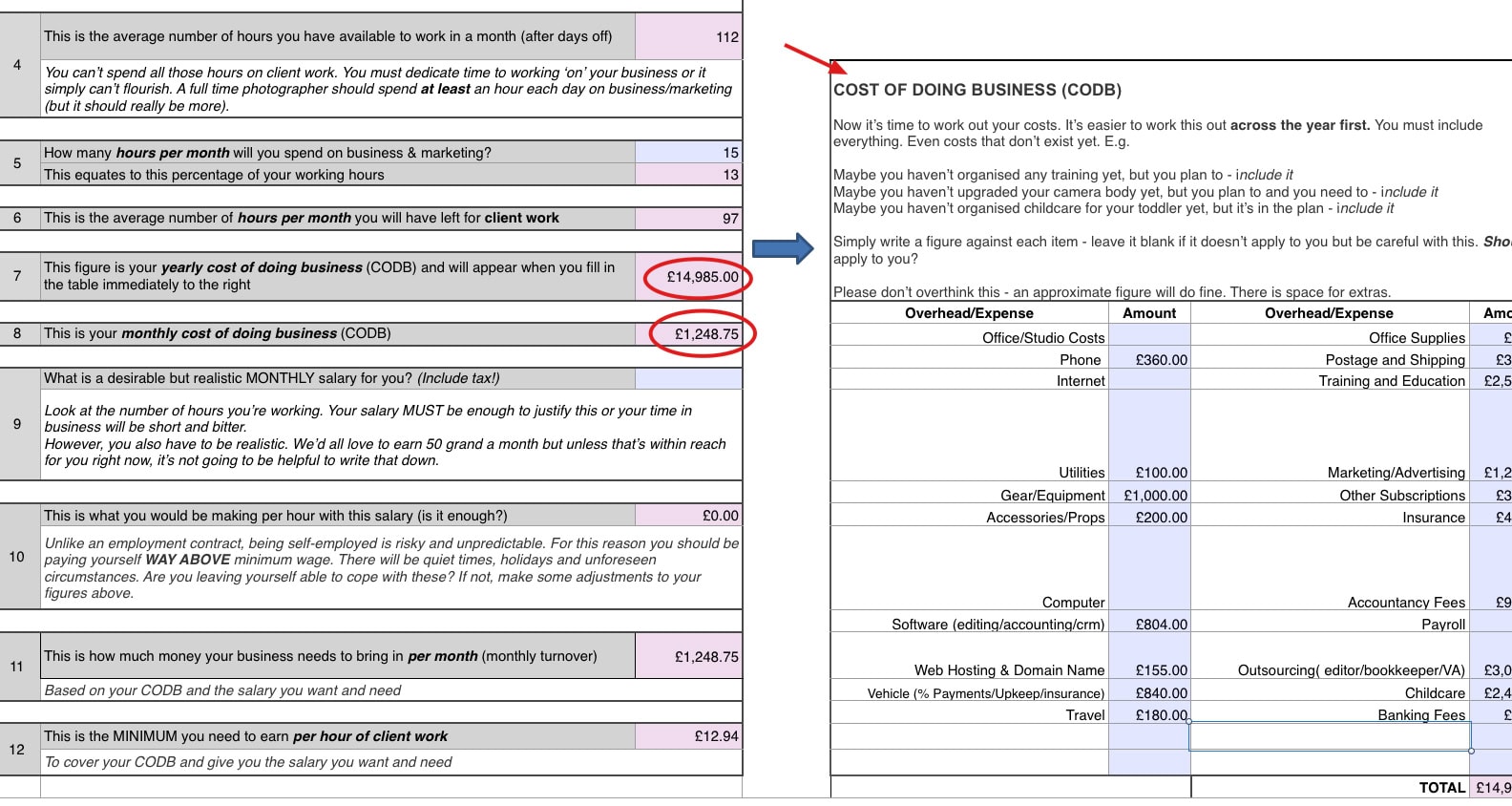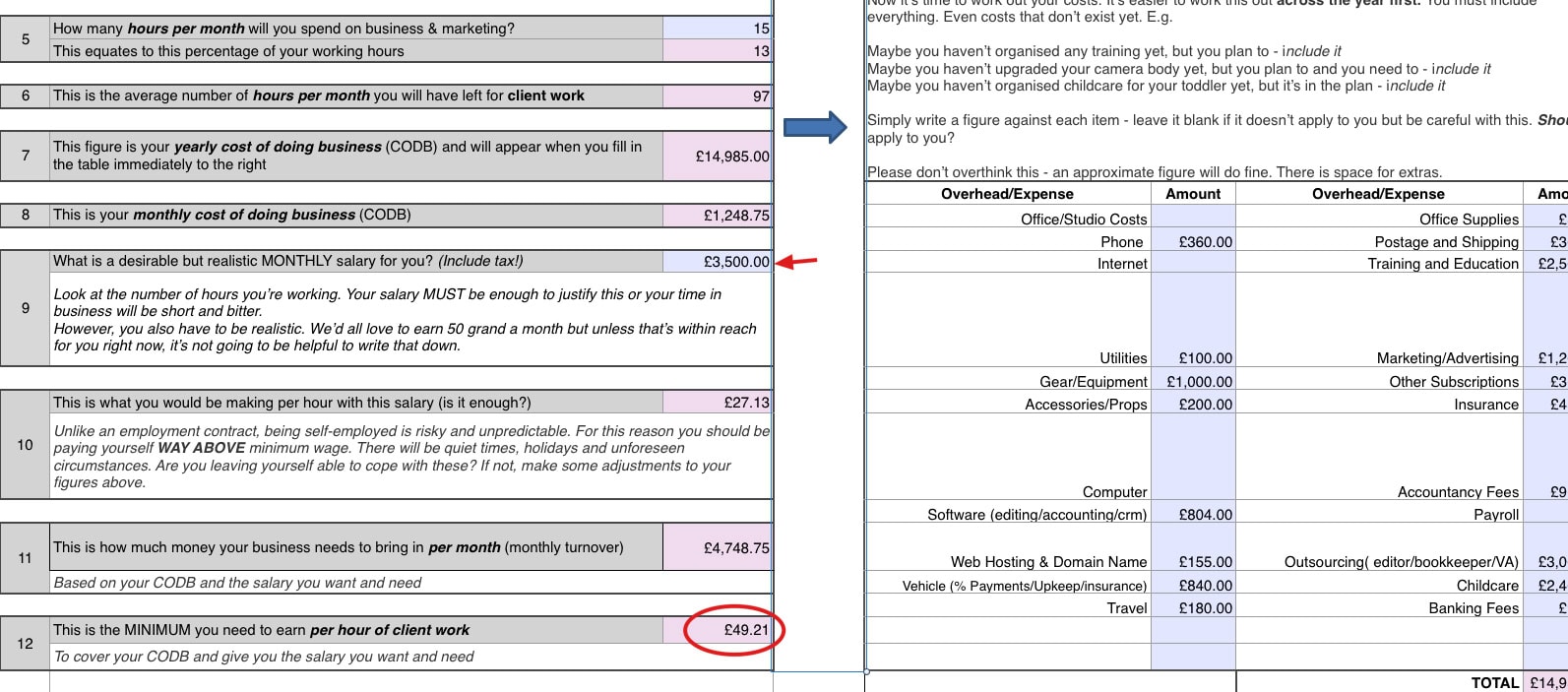3. How to Decide on The Right Pricing Model for YOUR Photography Business
There's no right answer when it comes to choosing a pricing model for your photography business. It's okay to experiment and be open to change. Don't feel tied to a pricing model that doesn't fit. Many photographers stress about sticking with their initial choice, but the truth is, it's perfectly fine to test different models until you find the one that suits you best.
Remember, no one is scrutinising your choices except you. If you need to adjust your pricing structure, go for it. Be prepared with a response if someone asks, but the likelihood is low. After all, it's your business and finding the right pricing model is crucial for your success.
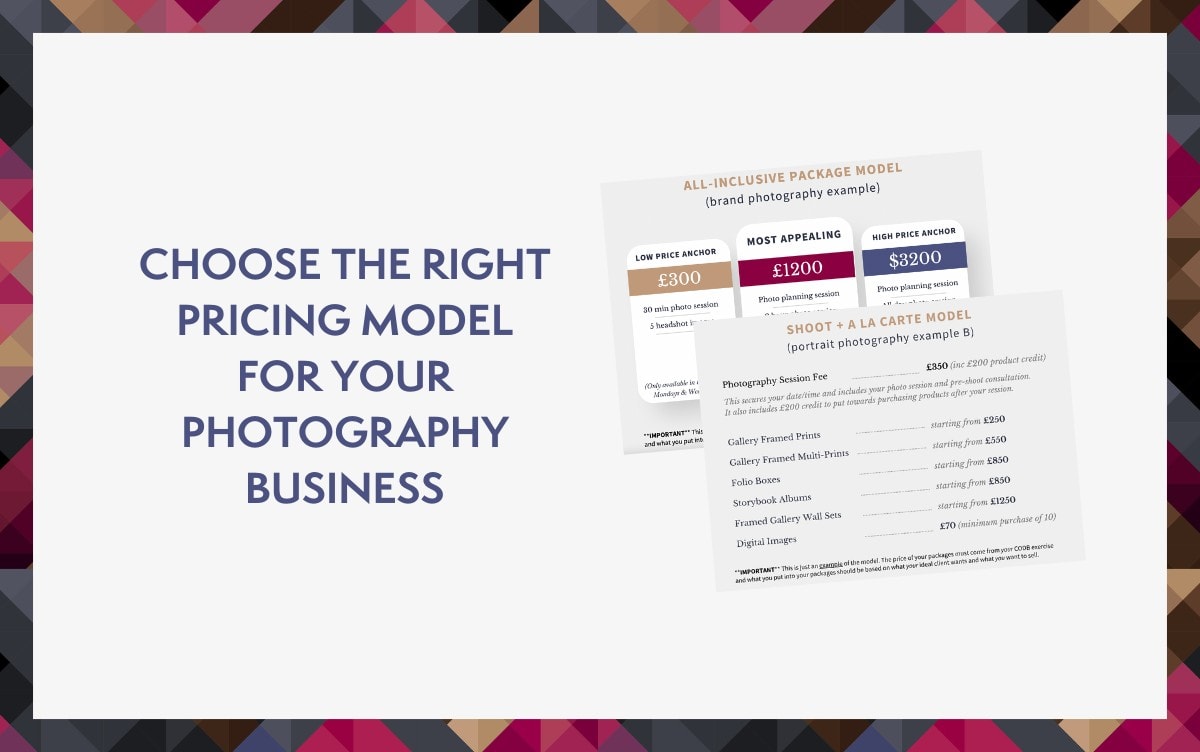
The Most Common Pricing Models that Photographers Use
Let's look at the most effective pricing models for various photographer types, understand how they work, delve into examples and discover how to apply the minimum average spend to each pricing model.
Is it possible to have different pricing models for your photography services?
Absolutely, and in fact, you should. Different services naturally align with different pricing models. If your brand photography pricing model differs from your family photography pricing model, there's no need to worry. It's entirely appropriate since these are distinct services catering to people in different mindsets.
1. The All-Inclusive Photography Package Model
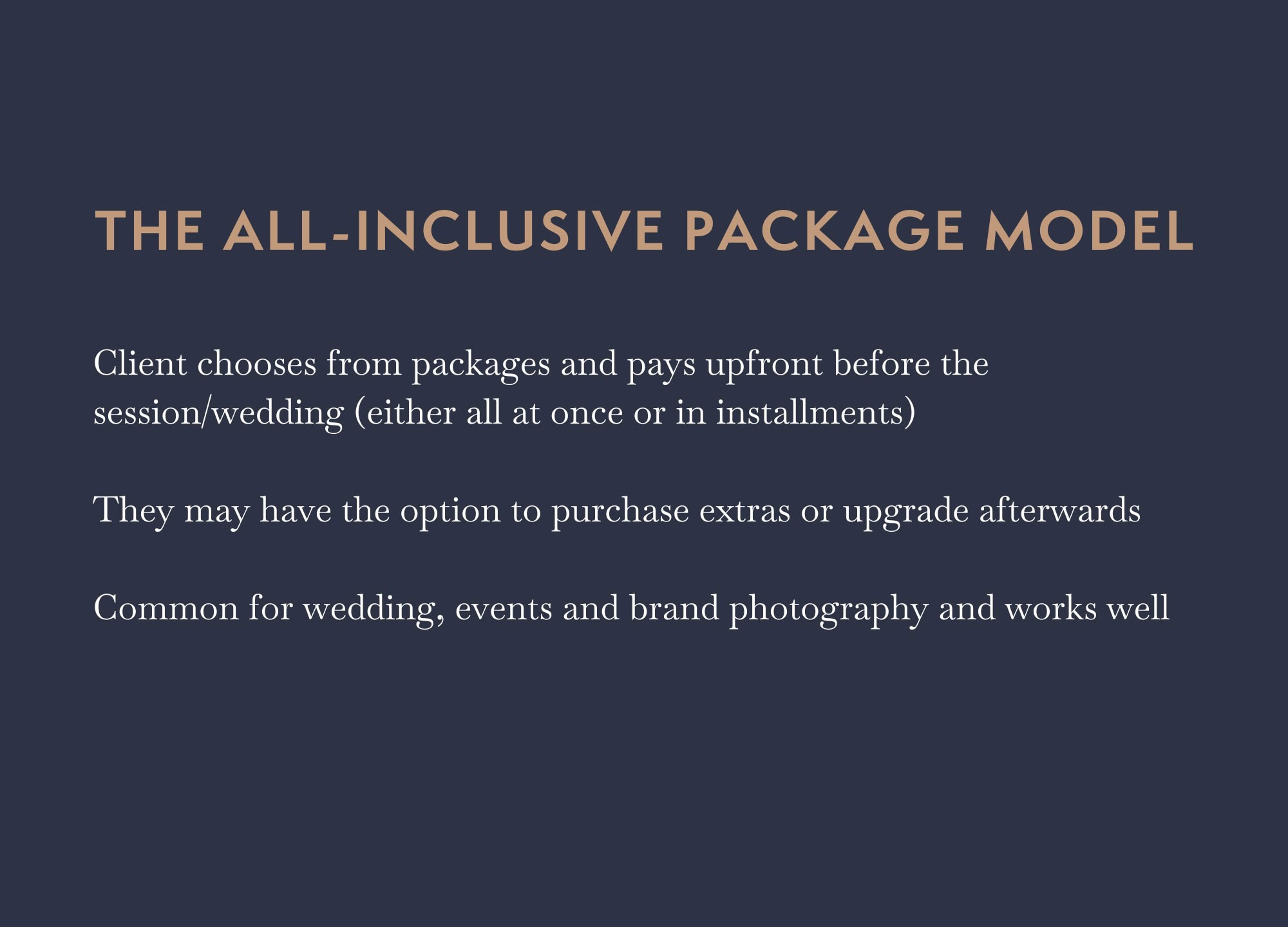
This is when the client chooses up front from the packages, which will include the time shooting and a set of images and potentially other products. Typically, there are three packages to choose from with the middle one being
the one that the photographer most wants to sell.The client either pays up front or in installments. It's completely up to you whether you want to give the client the opportunity to then upgrade or purchase extras.
This is a very common pricing model for wedding, event and brand photographers.Be very careful with using this model if you're a
family, newborn, maternity, pet or boudoir photographer. I know some of you might be using it and sometimes it works. But bear in mind, it is such an emotional purchase. Clients don't really know how many of those images they’re going to want until they see them.
However if you're choosing the
all-inclusive photography pricing package for family, newborn, boudoir or pets photography services, make sure you make it super easy and very enticing for your clients to upgrade after they see their photographs.
How to apply the minimum average spend to the All-Inclusive Photography Pricing model
- Ideally, you want to use your minimum average spend to price your most popular photography package - the ‘no-brainer’ package (make sure it is a no-brainer).
- Remember to add cost of goods and 10% wiggle room to this.
- Some will obviously spend less and some more!
Here's an example of an All-Inclusive Photography Package for a wedding photographer:
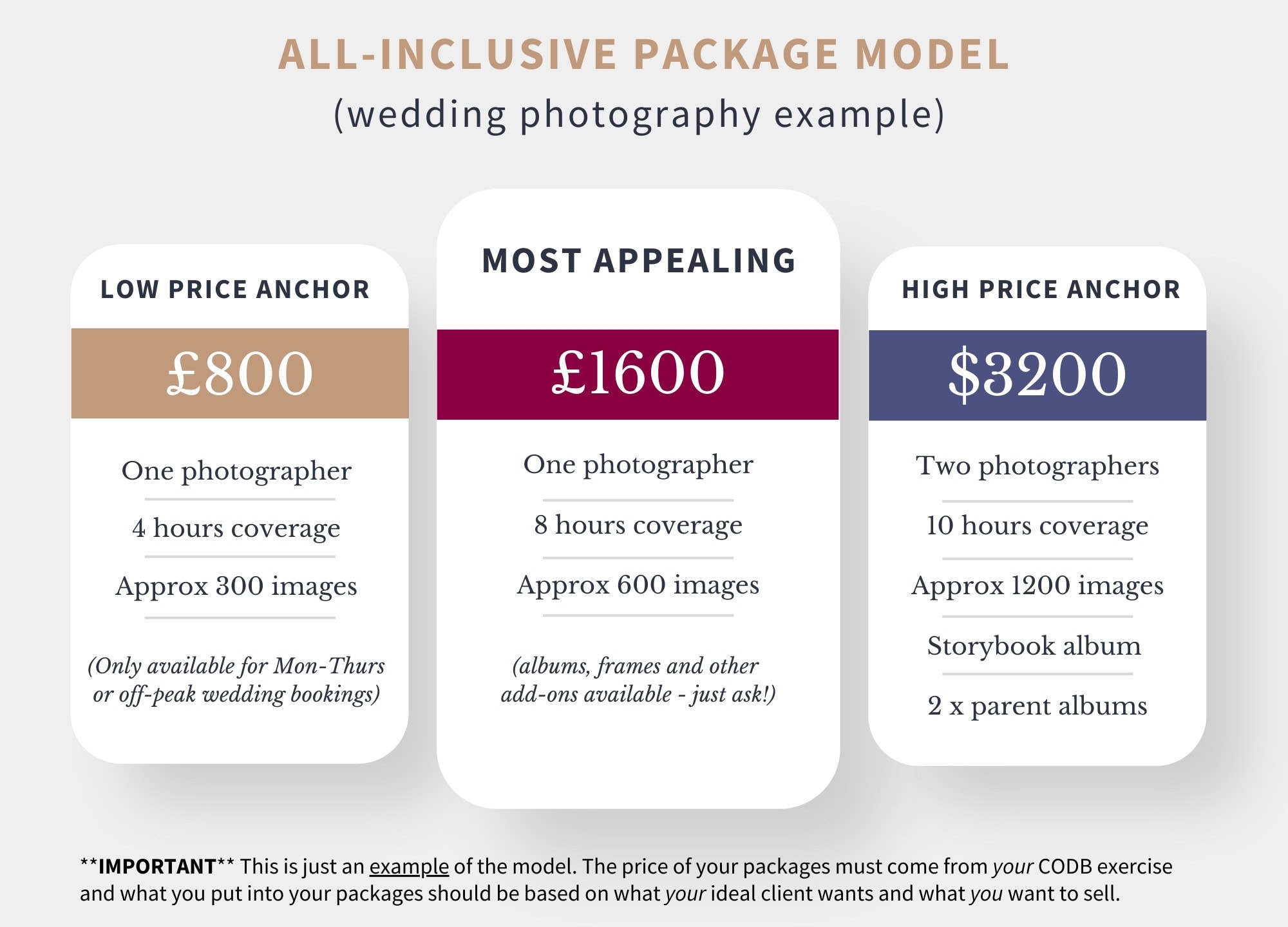
Here we’re using
price anchor psychology. We set a low price anchor, prompting people to view it and think,
"Oh, that's affordable." Then, there's the high price anchor that evokes reactions like,
"Wow, that's pricey!" This strategic contrast makes the
middle option exceptionally enticing. And we give these photography packages appealing names too.
Here's the
All-Inclucive Pricing Model example for brand photographers:
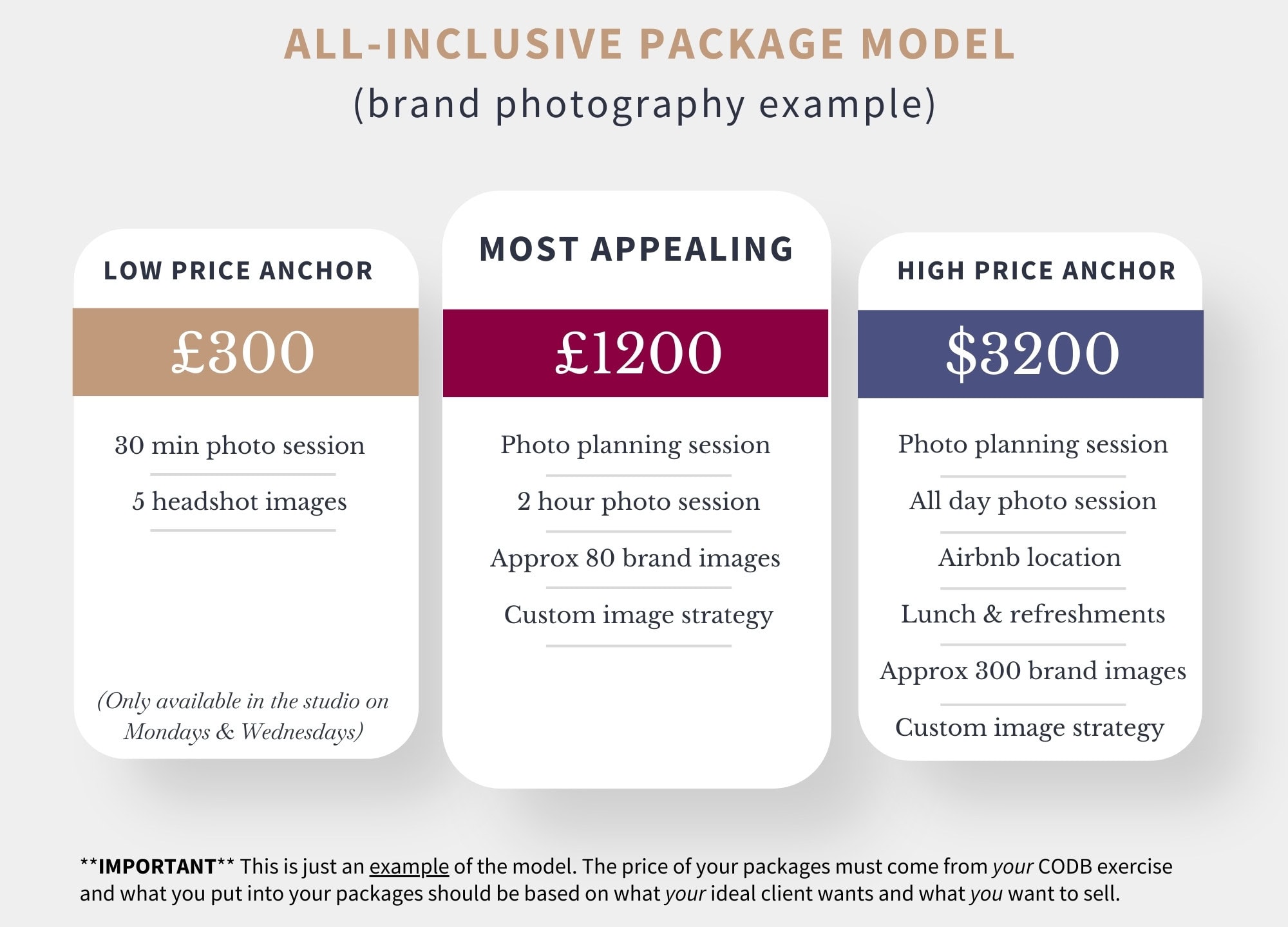
The pros & cons for the all-inclusive photography package model
PROS
- Simple for client and photographer
- With good price anchoring (check the previous examples) you can reliably sell the photography package you want to sell most of the time, meaning you can forecast your earnings reasonably accurately
- It’s familiar for clients (especially wedding couples)
- You can create packages to suit the way you love to work and what your clients love to buy
- Easier and softer sales process because it’s a one-time purchase
- Slicker workflow
CONS
- Clients may try to negotiate if there are items in the package they don’t want/need
- Family/boudoir/pet photography clients have NOT seen their images so they’re less likely to spend big upfront
- More potential for complaints after image delivery
- Some portrait clients will be hesitant to pay in full ahead of the shoot
- Most photography clients will stick to the package and not spend more (spend ceiling)
2. Flat Rate Photography Pricing Model
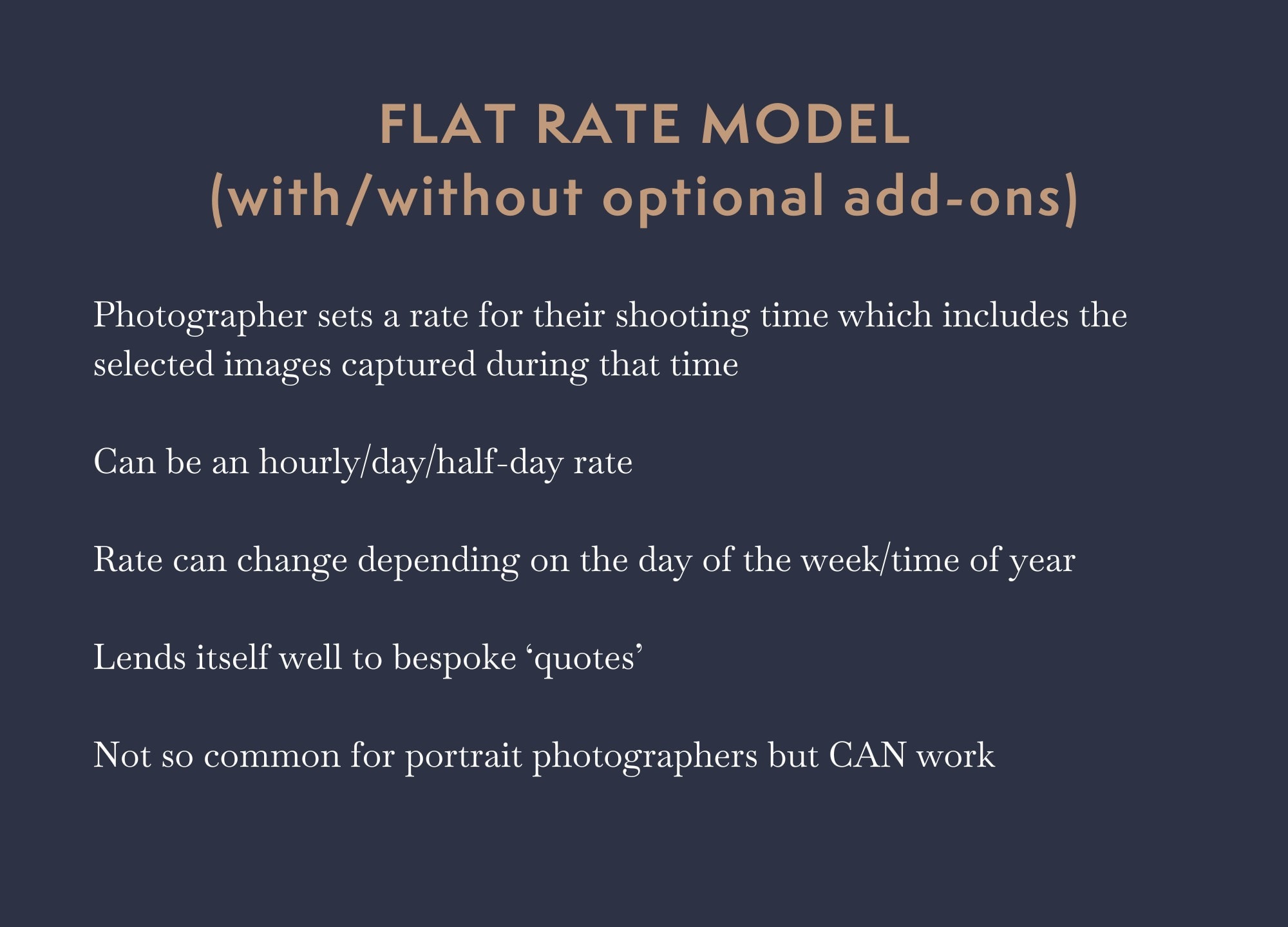
This is when the photographer sets a rate for their shooting time, and it includes the selected images from that shoot. With the flat-rate photography pricing model, you can include optional add-ons. You can keep it straightforward with an hourly rate, clearly stating the minimum hours for hire, which may vary, for example, eight hours on weekends and four hours on weekdays if you're a wedding photographer.
Alternatively, some photographers go for a full-day or half-day rate. I prefer the simplicity of an hourly rate with a minimum required hours specification. When quoting, gather as much information as possible about the job, estimate the shooting hours needed and provide a quote based on your hourly rate, considering extras like additional travel and accommodation costs.
It's definitely a less common pricing model for portrait photographers, however it can work, especially if they love to create bespoke experiences and bespoke products for their clients.
It's important to note that the hourly rate is not just the time you spend taking photographs, it's the time you spend editing the selected images you captured during that shoot as well. Additionally, factor in any other time devoted to client related activities, such as consultations, emails and administrative tasks.
If the client wants to purchase anything extra afterwards, they absolutely can, but this pricing model is not focused on upselling. It's created for sheer simplicity and it can work for any genre as long as you have a minimum number of hours that you will work for. It can be beautifully simple.
How to apply the minimum average spend to the Flat Rate Photography Pricing model
The pros & cons for the Flat Rate Photography Package model
PROS
- Simplicity for everyone
- Predictable earnings
- Clarity for the client - they know where they stand
- Everyone gets the same
- Hardly any selling for the photographer
CONS
- Potential for higher sales is limited
- Portrait clients may be hesitant to pay in full ahead of the shoot
3. Session + A La Carte Photography Pricing Model

This is one of the most popular photography pricing models and work very well for portrait photographers: families, newborns, pets, boudoir, maternity.
Clients pay upfront for the session and then choose items individually from your price list once the images are ready. There are no predefined packages; it's a one-by-one selection. You can set a minimum order for digital images or prints if you prefer. A la carte often involves in-person sales (IPS), which is what I highly recommend for this model.
This pricing suits confident, sales-oriented photographers or those with a dedicated salesperson. It's ideal for guiding photography clients in-person to choose images and products. A la carte allows clients to add products without a spending limit, making it perfect for those who excel in sales. However, it may not be suitable for beginners or those still establishing themselves. Remember, it does require a solid foundation in sales skills and confidence.
Here's a Session + a La Carte pricing model example for portrait photographers:
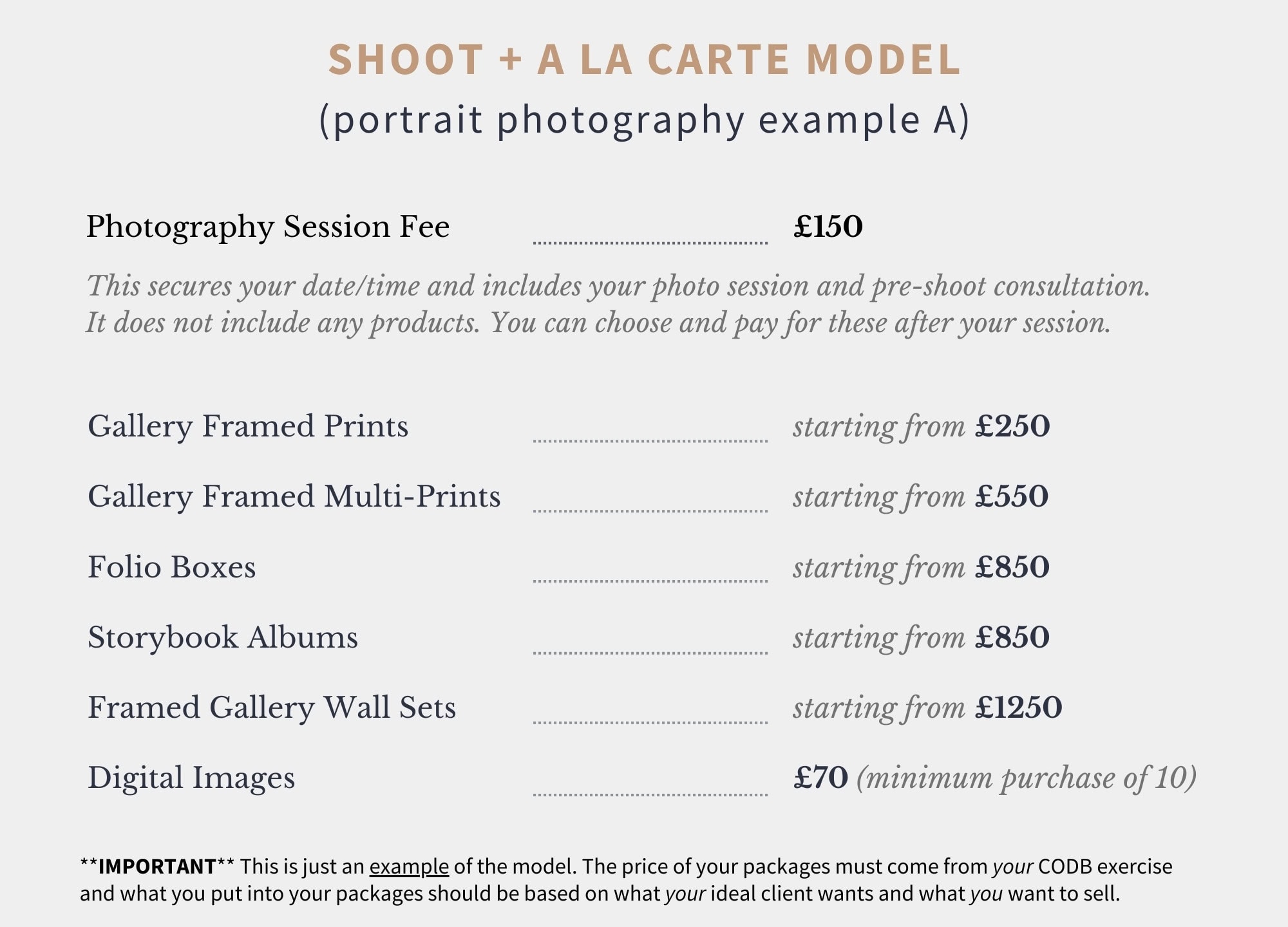
I prefer having a session fee for models like this, and you can include print credit if you wish. Keep the a la carte price list simple; avoid unnecessary complexity. If it doesn't fit on one page, it's likely too complicated. While you can showcase product images on a separate page or client guide, the pricing details should be concise and easily digestible on a single page.
How to apply the minimum average spend to the session + A La Carte Photography Pricing model
- Set an appropriate upfront fee (perhaps add some print credit) and then make it very hard for clients to spend less than the minimum you need
- This takes some experience and testing - it’s not going to be something you get right first time without knowing what your clients typically buy and spend
The pros & cons for the Session + A La Carte Photography Package model
PROS
- It’s bespoke - clients can purchase exactly what they want
- The entry point price is often lower, giving clients less budget anxiety
- It’s a very simple, initial purchase decision for the client
- Purchase decisions are split, making it more likely that they spend more on their photographs afterwards
- Clients spend more when they’ve just viewed their gorgeous images
- Clients spend more when they’ve been able to get to know, like and trust you
CONS
4. Session + Package Photography Pricing Model
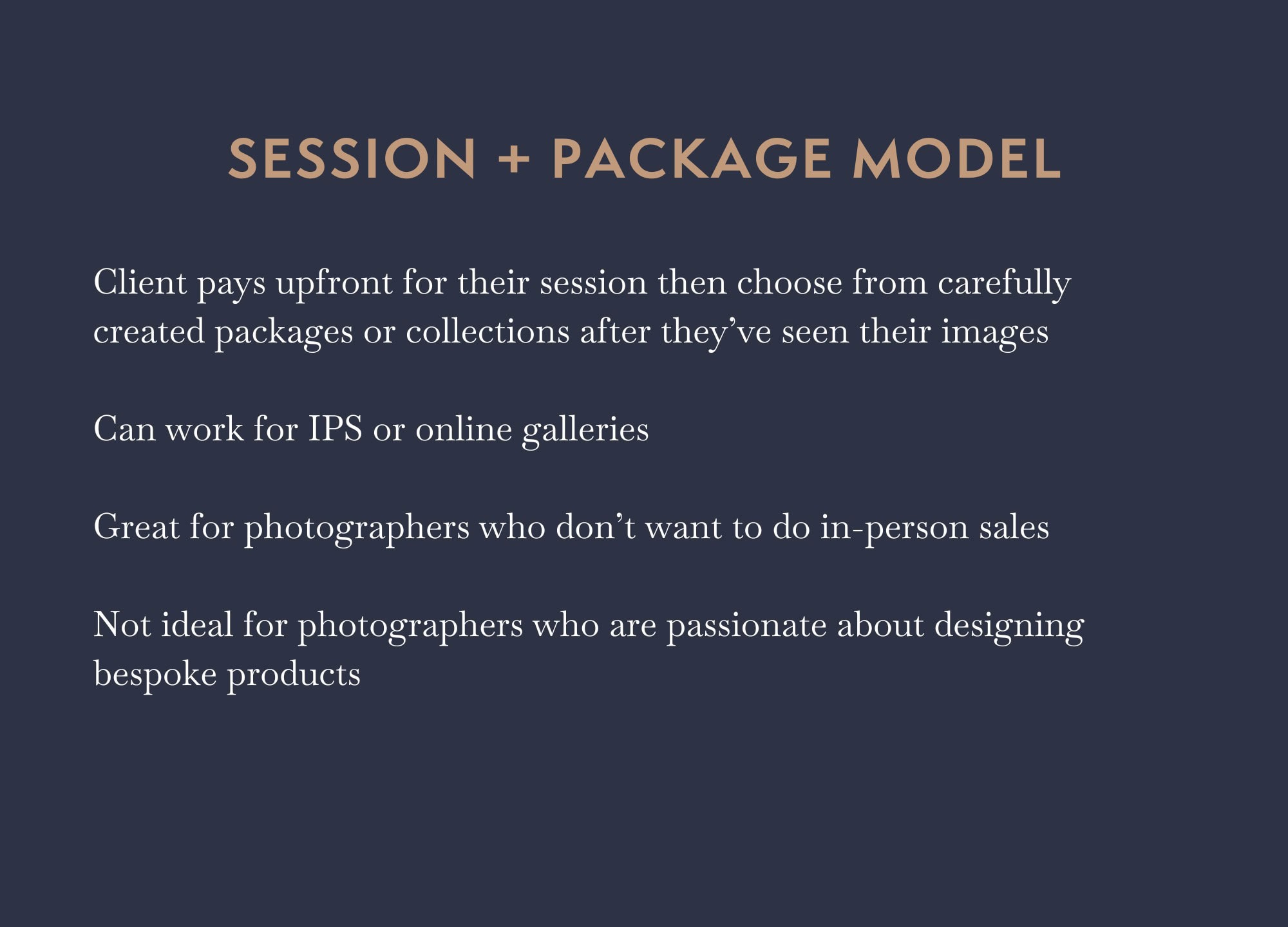
Again, this pricing model works best for portrait photographers. In a
Session + Package Model, clients pay upfront for their photography session and choose from carefully created packages (or collections) after viewing their images, leading to
an emotional therefore higher spending.It's suitable for both online galleries and
in-person sales (IPS) and it’s a good model for photographers who are looking for that slicker, simpler client workflow. You can tailor your photography packages with prints, digitals, wall art or albums, but it may not suit photographers passionate about creating bespoke offerings for their clients. For them, a flat rate model or an a la carte price list might work better.
How to apply the minimum average spend to the session + package model
- Ideally, you want to use your MAS to price your middle package
- Add cost of goods and 10% wiggle room
- Some clients will obviously spend less and some more!
Shoot + Package Pricing Model - Portrait Photography Example A:
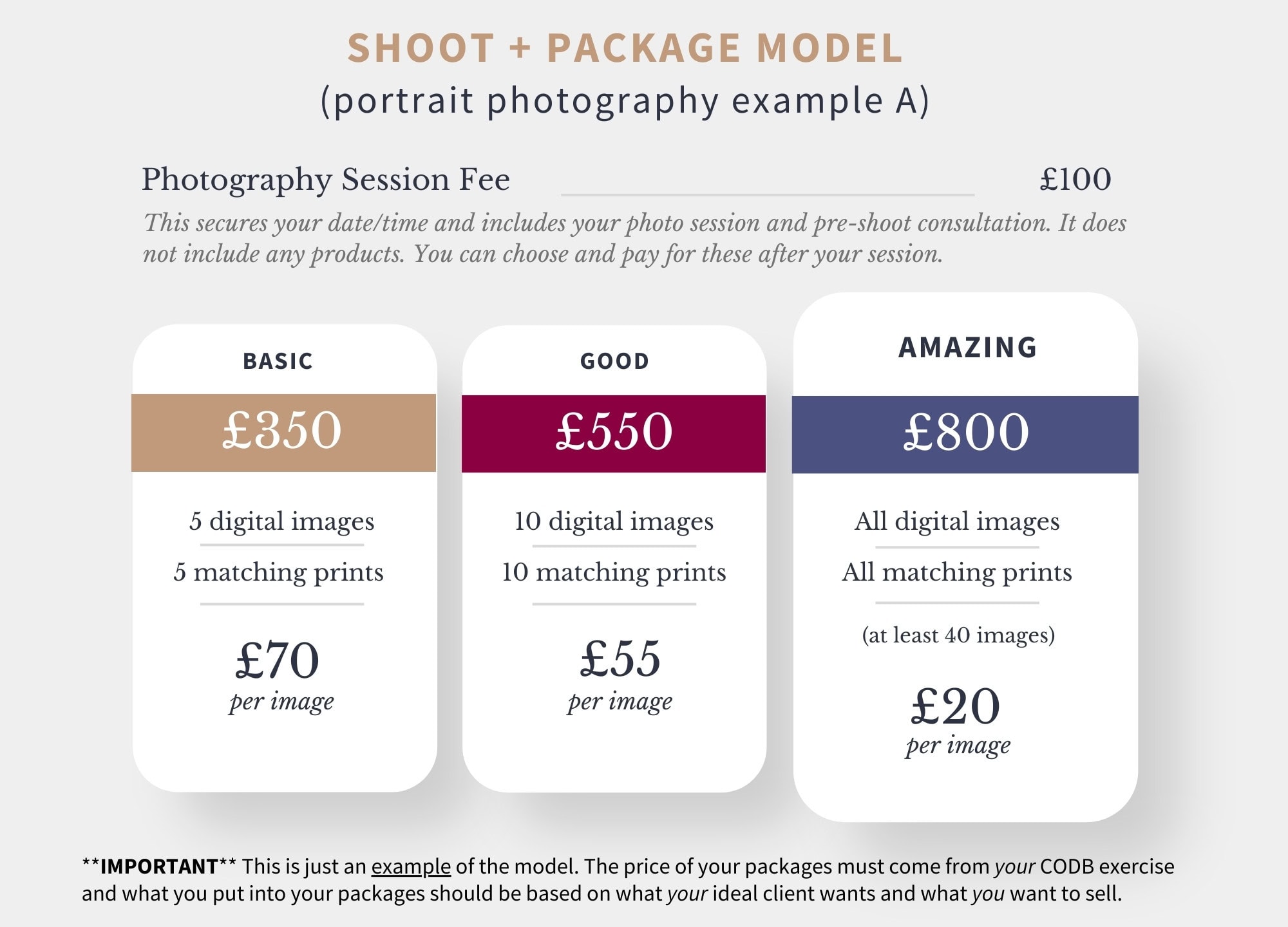
This pricing model is ideal for photographers aiming to establish themselves and attract more clients. It focuses on digital images and prints, offering tiered packages with increasing benefits. Clients can choose from packages based on their needs and budget, with options for session fees and print credits. The top package is the most appealing by offering all edited images. It's designed for efficiency, automation and profitability, particularly when tailored to individual business needs and supported by effective sales strategies. Shoot + Package Pricing Model - Portrait Photography Example B:
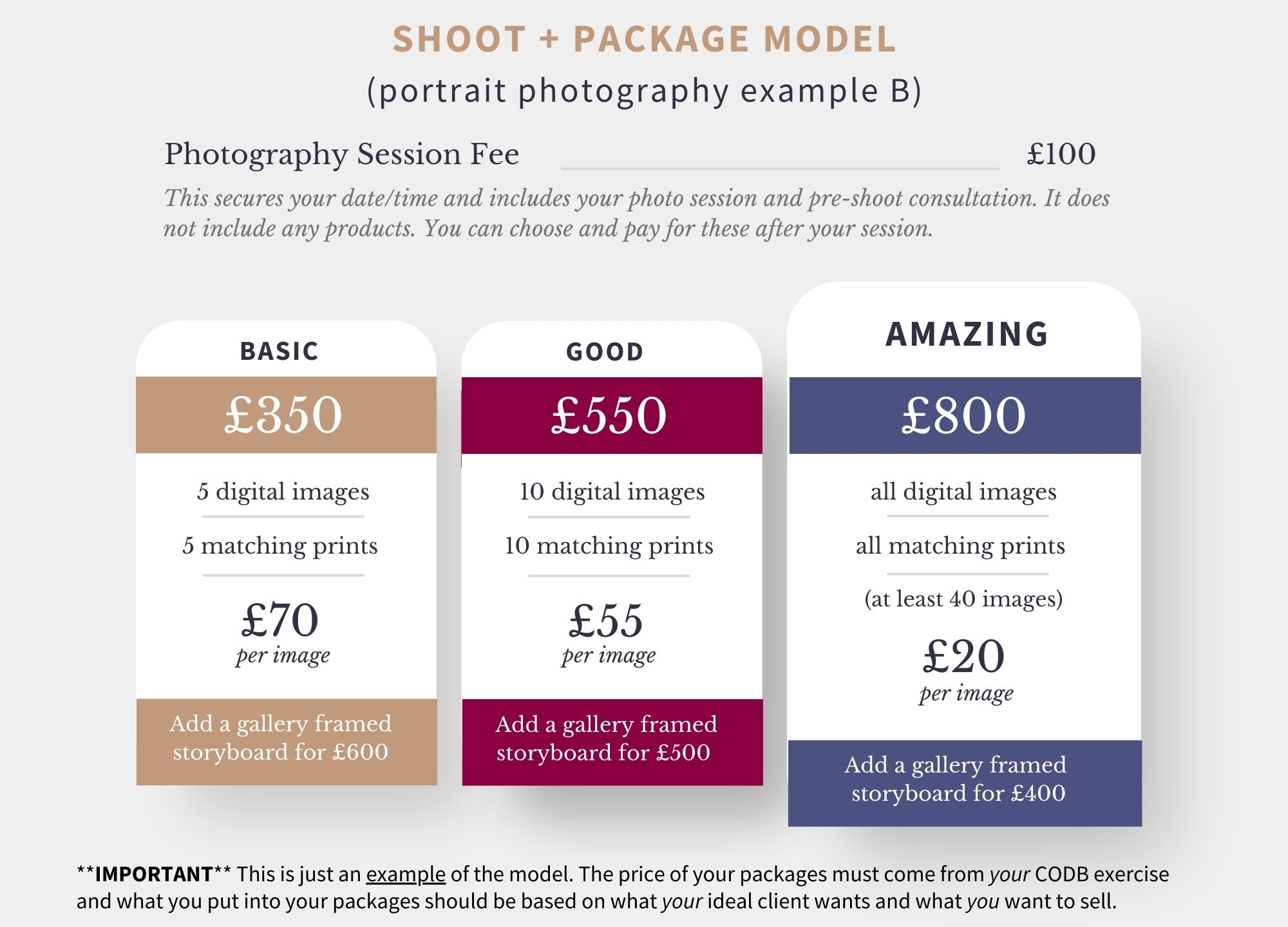
This model is a step up for photographers already comfortable with their current pricing structure and eager to introduce products into their offerings. By adding a signature product to each package, clients are enticed to upgrade for a reduced price on the featured item. Whether it's a framed storyboard, a luxurious album or a gorgeous folio box, it should be showcased during sessions and presented in online galleries to enhance client experience and drive sales.
Shoot + Package Pricing Model - Portrait Photography Example C:
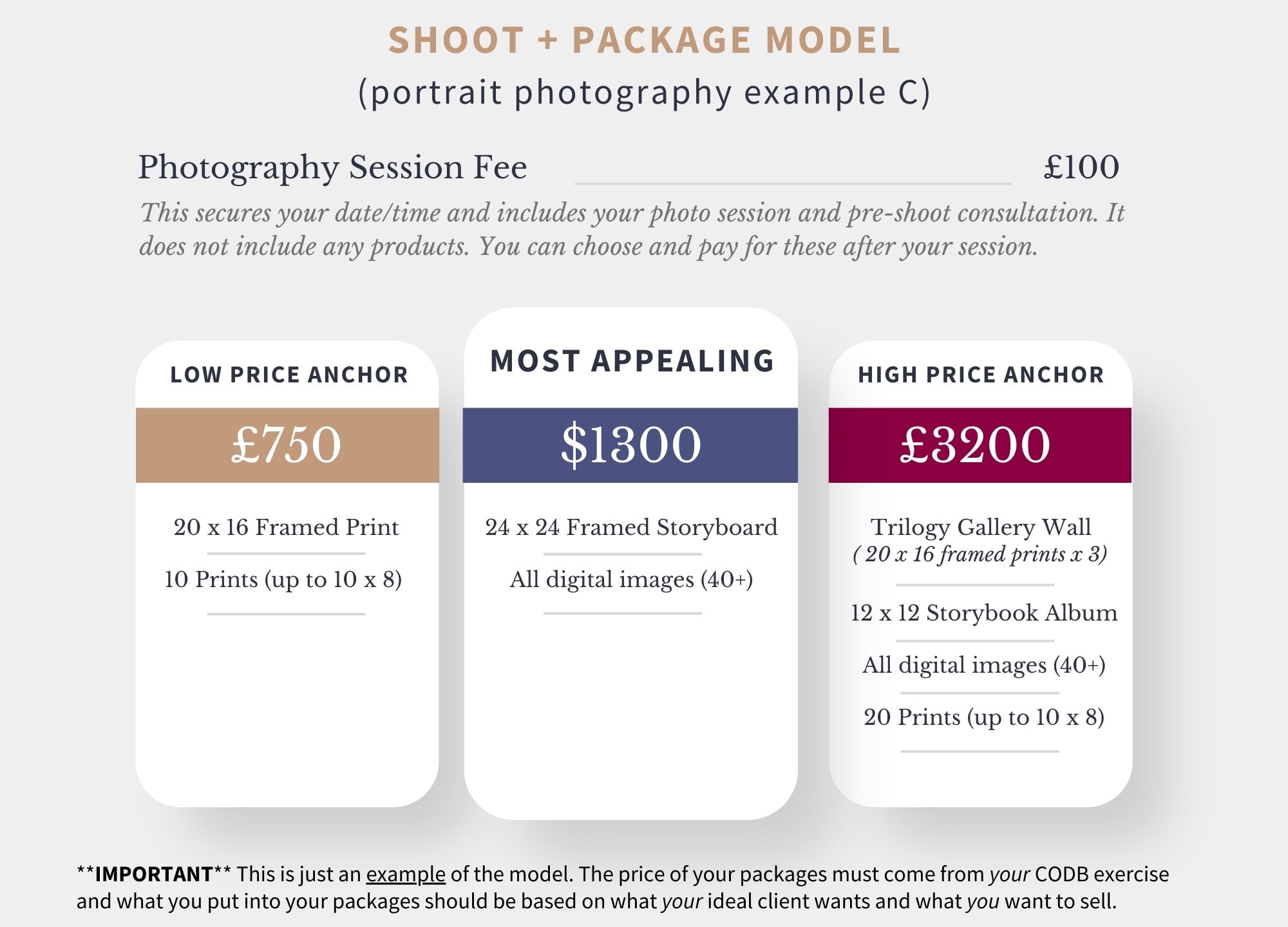
This package is ideal for photographers who prefer in-person sales and want to offer a variety of products to their clients. Here we have a session fee alongside a curated selection of digital images and a stand out product included in the middle package. By strategically anchoring prices, clients are guided towards the desired option during their emotional reaction to their images. The focus is on the middle package, designed to maximise profitability and ease of delivery for the photographer. So as you can see, we're putting a ceiling on our prices with these types of models. If you don't want a ceiling, you have to go for a la carte photography pricing.
But if you don't mind having a ceiling on what you can earn for a while, because that's the phase you're in then just make sure that the ceiling is absolutely delightful for you.
The pros & cons for the Session + Package Photography Pricing Model
PROS
- Less chance for analysis paralysis
- You can create packages to suit the way you love to work and what your clients love to buy
- Less selling for the photographer - online galleries can be used if you wish
- The entry point price (session fee) is often lower, giving clients less budget anxiety
- It’s a very simple, initial purchase decision for the client
- Purchase decisions are split, making it more likely that they spend more on their photographs afterwards
- Clients spend more when they’ve just viewed their gorgeous images
- Clients spend more when they’ve been able to get to know, like and trust you
- With good price anchoring you can reliably sell the package you want to sell most of the time, meaning you can forecast your earnings reasonably accurately
- Slicker, simpler workflow
CONS
- No tailored purchases
- Less choice for fussier clients
- Clients may try to negotiate if there are items in the package they don’t want/need
- Most clients will stick to the package and not spend more (spend ceiling)
5. Session + Hybrid Photography Pricing Model
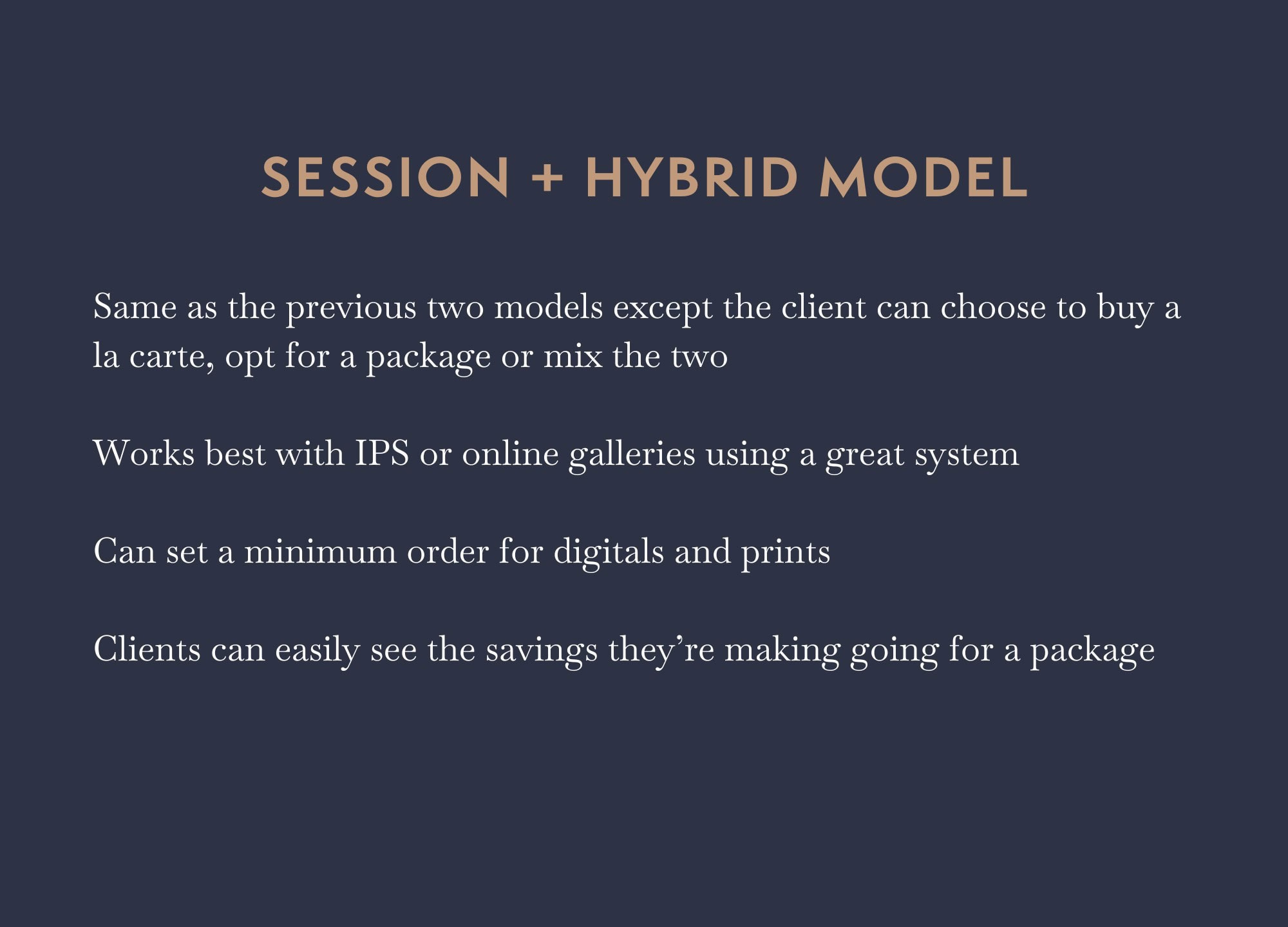
This photography pricing model
integrates elements of both package and a la carte, offering your clients the flexibility to choose between pre-packaged options or individual items. A straightforward a la carte price list showcases premium prices for each product, encouraging clients to consider package deals for savings and convenience. Packages are strategically designed based on client preferences and profitability with clear incentives for clients to opt for bundled offerings.
The Session + Hybrid model makes package option more appealing to your photography clients. Very few clients will opt for a la carte purchases. The balance between packages and a la carte options caters to clients' varied preferences while maintaining profitability for you. This photography pricing model
is best suited for in-person sales, however it can also be adapted for online sales with a focus on simplicity and product visibility. It's a great model for photographers who don't want that full on a la carte selling experience, but they also don't want to be too rigid with their packages.
How to apply the minimum average spend to the session + hybrid photography pricing model
- Ideally you want to use your MAS to price your middle package
- Add cost of goods and 10% wiggle room
- Some will obviously spend less and some more
Session + Hybrid Model - Portrait Photography Pricing Example:
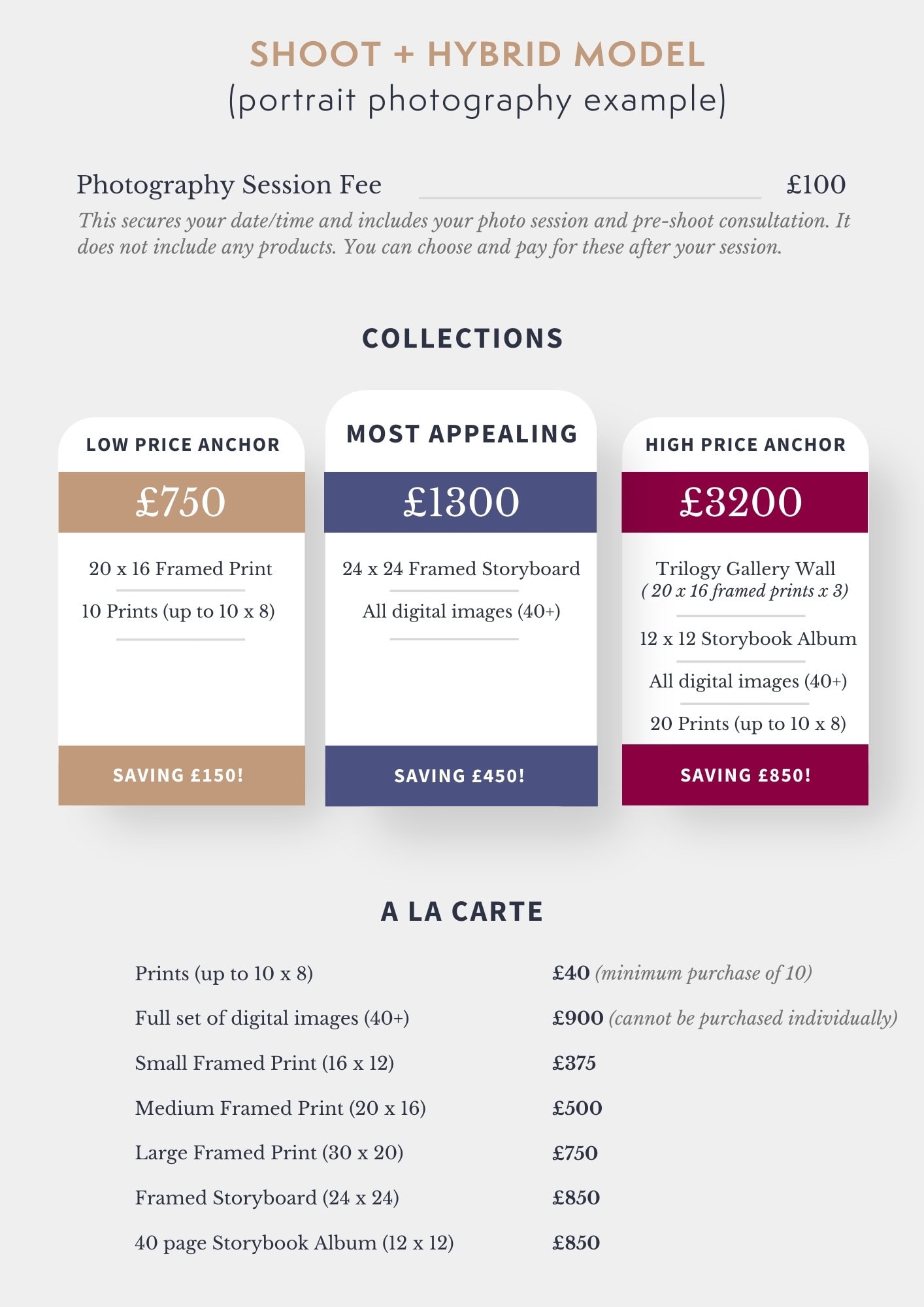
The pros & cons for the Session + Hybrid Photography Pricing Model
PROS
- Less chance for analysis paralysis
- You can create packages to suit the way you love to work and what your clients love to buy
- Less selling for the photographer - online galleries can be used if you wish
- The entry point price (session fee) is often lower, giving clients less budget anxiety
- It’s a very simple, initial purchase decision for the client
- Purchase decisions are split, making it more likely that they spend more on their photographs afterwards
- Clients spend more when they’ve just viewed their gorgeous images
- Clients spend more when they’ve been able to get to know, like and trust you
- With good price anchoring you can reliably sell the package you want to sell most of the time, meaning you can forecast your earnings reasonably accurately
- Clients see the amazing savings they can make when they opt for a package
- Slicker, simpler workflow
CONS
- No tailored purchases
- Less choice for fussier clients
- Clients may try to negotiate if there are items in the package they don’t want/need
- Most clients will stick to the package and not spend more (spend ceiling)
If you’re still reading this, you’re amazing (you're also a perfect fit for
my membership)! This is the work that takes you closer to
a profitable photography business.
Spend the time, give it the effort and enjoy the clarity this work is going to bring when it comes to pricing your photography products and services! If you haven’t yet, make sure you
download and keep this pricing calculator handy for when you need to revisit your prices again.

